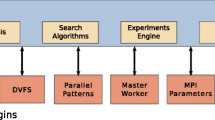Abstract
As the world's supply of thermophysical property data that emerges from the laboratory increases, users of data become more dependent on evaluated compilations. However, the cost of producing and maintaining such compilations by traditional methods is becoming prohibitively expensive. The traditional compiler searches the literature, extracts, evaluates, and analyzes pertinent data and gathers it into a document or electronic database that reflects the state of knowledge of a particular subject at a particular time. Because clef the inherent time lag, it never catches up to the current state. The attempt to catch up requires that the whole procedure be repeated at intervals, with greater cost for each cycle. A more cost-effective procedure, called dynamic compilation is described. Here the user produces a compilation to-order at the time of need. It uses a suitable archive of experimental data maintained up-to-date, an automated procedure for extracting and selecting the best pertinent data, and procedures for fitting the pieces to suitable models that furnishes parameters for internally consistent data sets. With proper design of components this procedure is more economical than and superior to the traditional static compilations.
Similar content being viewed by others
REFERENCES
IUPAC Commission 1.2 on Thermodynamics, J. Chem. Thermodyn. 13:603(1981).
R. C. Wilhoit, K. N. Marsh, X. Hong, N. Gadalla, and M. Frenkel, Landolt-Börnstein, Group IV: Physical Chemistry, Vol. 8, Thermodynamic Properties of Organic Compounds and Their Mixtures, Subvolume B. Densities of Aliphatic Hydrocarbons: Alkanes (Springer-Verlag, Berlin, 1996).
R. C. Wilhoit, K. N. Marsh, X. Hong, N. Gadalla, and M. Frenkel, Landolt-Börnstein, Group IV: Physical Chemistry, Vol. 8, Thermodynamic Properties of Organic Compounds and Their Mixtures, Subvolume C. Densities of Aliphatic Hydrocarbons: Alkenes, Alkadienes, Alkynes, and Miscellaneous Compounds (Springer-Verlag, Berlin, 1996).
R. C. Wilhoit and K. N. Marsh, J. Chem. Inform. Comput. Sci. 29:17 (1989).
R. C. Wilhoit and K. N. Marsh, Documentation for the TRC Source Database (Thermodynamics Research Center, College Station, TX, 1996).
TRC Thermodynamic Tables—Hydrocarbons and—Non-Hydrocarbons (Thermodynamics Research Center, Texas A&M University System, College Station, 1997).
LOADER2 for Windows. User Manual and Reference Guide (Physical Property Data Service, NEL, East Kilbride, Glasgow, UK, 1996).
Author information
Authors and Affiliations
Rights and permissions
About this article
Cite this article
Wilhoit, R.C., Marsh, K.N. Future Directions for Data Compilations. International Journal of Thermophysics 20, 247–255 (1999). https://doi.org/10.1023/A:1021407003786
Issue Date:
DOI: https://doi.org/10.1023/A:1021407003786




